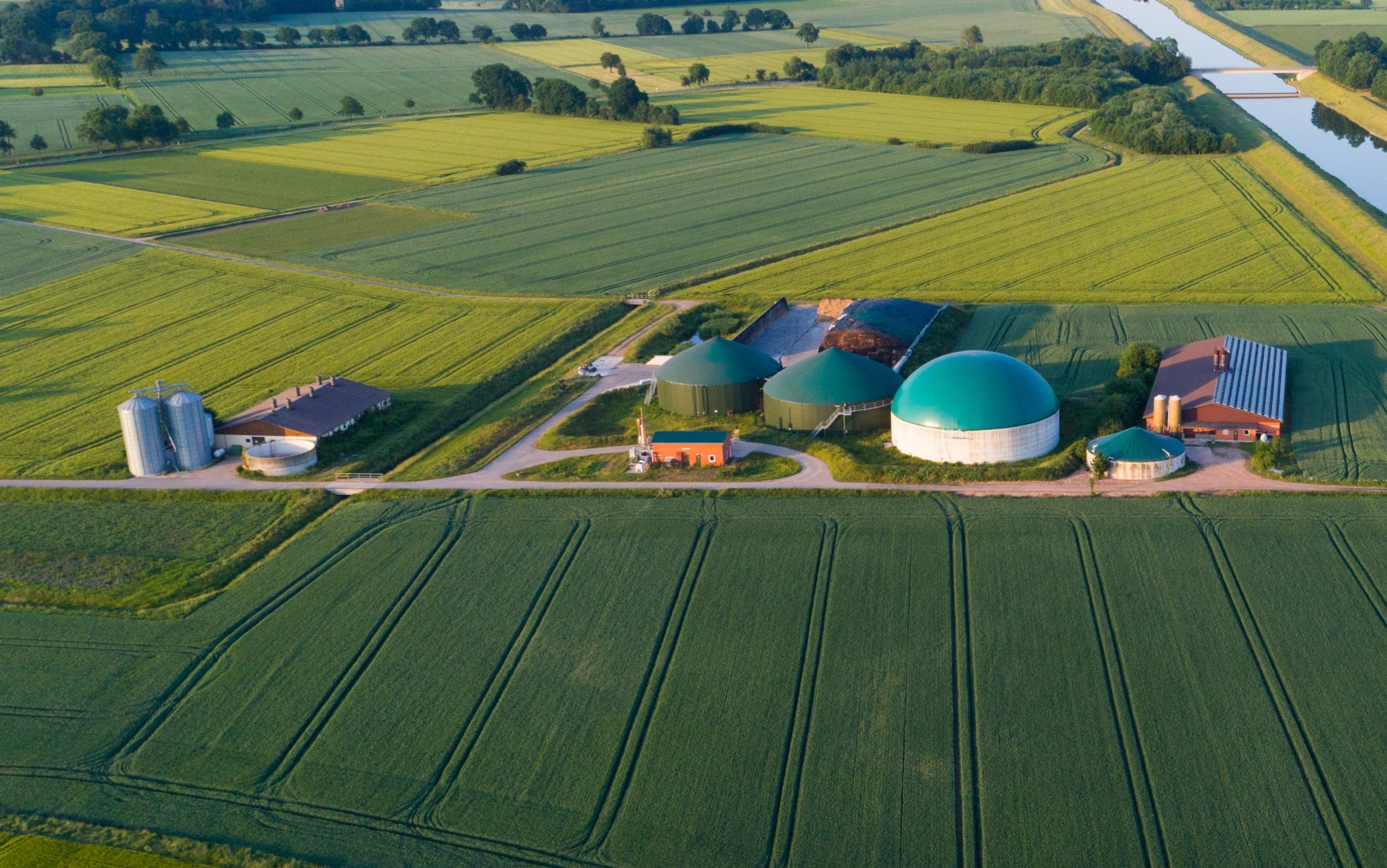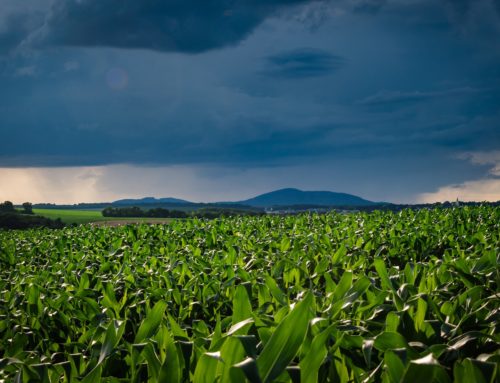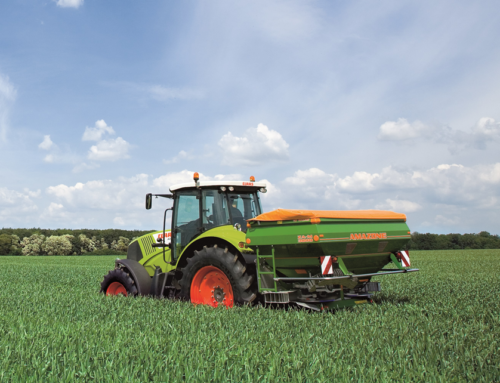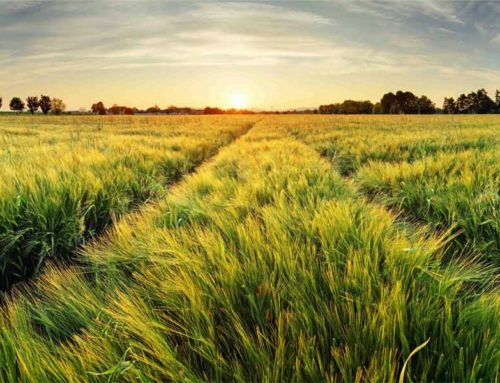Biogas in the agricultural sector
Over the past few years, electricity generation using biogas in the agricultural sector has become increasingly important, not least because today the sector plays a vital role as a supplier of raw materials. From 2007 to 2014 in particular, the number of biogas plants in Germany grew rapidly, partly due to the funding guidelines implemented as part of the German Renewable Energy Sources Act (EEG) which came into force in 2000. At a European Union (EU) level, there are action plans and guidelines for the growing proportion of renewable energy sources that can be used by the agricultural sector to produce biogas. For example, the methane strategy of the EU Green Deal has resulted in an accelerated market development for biogas produced from sustainable sources in the agricultural sector. The EU’s “Fit for 55” plan has also played a role here. As a result, the importance of biogas plants has increased because the production of biogas in the agricultural sector is essential for renewable energy and heat supplies. Maintaining a relevant size of biogas plants requires good crop management in order to design and monitor the growing conditions efficiently. Site-adapted and balanced crop rotation systems are ideal for ensuring a sustainable production of biogas in the agricultural sector. A carefully thought-through crop and seed planning can therefore be crucial. In the next section, we’re going to take a closer look at the crops that can be used to produce biogas.
Plant substrates
In the past, maize was often used to produce biogas in the agricultural sector. The crop is very well-suited to this because of its good yield performance. However, despite the action plans and guidelines in place, an ever-changing crop rotation will be required in the future in order to maintain fertile soils. This also requires good professional agriculture practices, if possible, without a second crop of the same plant being grown in succession.
To avoid this, there are other plants that can be used in addition to maize. The “food vs fuel” debate has put forward different alternatives for producing enough biomass outside of the cultivation periods of the main crops. There is a wide range of crops available that can be used as energy crops and that are particularly suitable for the production of biogas in the agricultural sector. By picking the right catch crop, farmers can produce a relatively large amount of biomass in a short amount of time. The energetic output per hectare is important here. In addition, the dry matter content of the varieties must be taken into account. Flowering and stem-forming plants are also a good alternative for producing biogas. When main, catch and secondary crops are mixed, the effects of the crop rotations play a vital role. There are a range of digital tools available to help with the analysis and transparently map the yield performance, such as the Crop and Seed Planning component from 365FarmNet for example.

Maize silage
Just like in the past, today maize silage is most commonly used to produce biogas in the agricultural. It is particularly popular because of its stable yields and high methane yields. Special, site-adapted maize varieties, such as late-ripening ones, are also available. As the retention time required to break down the maize silage in the digesters of the biogas plants to produce biogas is significantly different to when the maize is used for animal feed, the aim is to have a high content of slowly degradable carbohydrates in the maize silage.
Grass silage
With grass silage, the following applies: a higher crude protein content means a lower methane yield. The number of cuts has a similar effect, the first cut being the most suitable for the production of biogas in the agricultural sector. However, the economic benefits of using grass silage for the farm should be checked by means of a profitability calculation. In addition to cultivation on permanent grassland, arable land can also be used to grow different crop mixtures. One example of this is clover grass which consists of a mixture of legumes added to grass seed. The mixtures can also be adapted to the local conditions on individual farms.
Whole crop cereal silage
As a general rule, whole crop cereal silage is a material that ensiles well. Perennial rye is particularly suitable for producing biogas in the agricultural sector. In total, the crop produces yields of approx. six tonnes of dry matter per hectare. Perennial rye should be planted before the main crop and should not really affect its growth. This can be ensured with a good crop management and a sufficient documentation of crop cultivation activities. The harvesting time also has a significant impact on the yield performance and methane yield. With perennial rye, high energy yields are achieved from the “ear emergence” to “lactic ripeness” vegetative stages. Even though maize offers more advantages, whole crop cereal silage is a good choice for biogas production in the agricultural sector as it can be used to break up crop rotations. This is particularly the case when humus-draining crops such as sweet grasses (sorghum and other varieties) are being used.
Sugar beet
Sugar beet has been used by many in the agricultural sector to produce biogas for several years now. In particular, farmers have been using excess beets that they didn’t need to meet their sugar beet quota. Following the reform of the European Sugar Regime in 2017, there has been a decline in the amount of sugar beet directly reaching the digesters of the biogas plants. It is now much more common for shredded beets to be used to produce biogas in the agricultural sector.
Catch crops
Mustard, summer rapeseed, oil radish and wild plant mixes can be used as catch crops to produce biogas in the agricultural sector. The aim is for farmers to obtain a high dry matter yield. The catch crops must be able to establish themselves well in the crop rotation and should not cause any problems during the harvest. The cultivation of turnips is therefore only suitable for specialist farms that have the right harvesting equipment to harvest this crop.
Residual materials, by-products and co-substrates
With regards to the residual materials resulting from biogas production in the agricultural sector, there are many requirements that apply and that must be observed. By-products from livestock farming can pose a major risk through infection chains between animals and animals and animals and humans. As such, appropriate measures must be taken to ensure a safe production of biogas in the agricultural sector. Even co-substrates from the industry should not contain substances that can reach the soils once the fermentation substrate has been spread on the ground and then damage the environment.
Press contact
Yasmin Moehring
Tel. +49 30 25 93 29–901
Mobil +49 151 17 28 18 69
moehring@365farmnet.com



